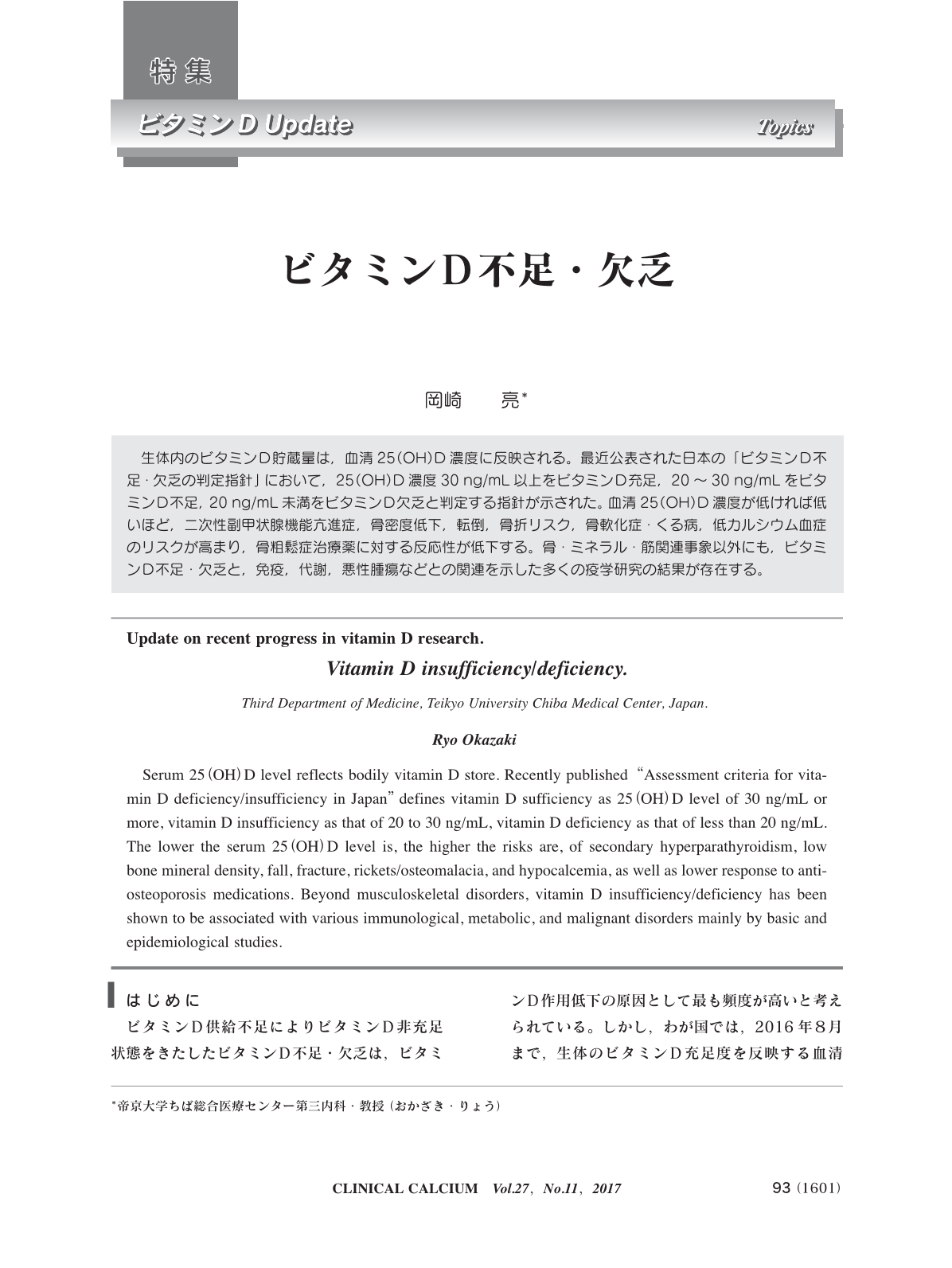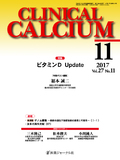Japanese
English
- 有料閲覧
- Abstract 文献概要
- 1ページ目 Look Inside
- 参考文献 Reference
生体内のビタミンD貯蔵量は,血清25(OH)D濃度に反映される。最近公表された日本の「ビタミンD不足・欠乏の判定指針」において,25(OH)D濃度30 ng/mL以上をビタミンD充足,20~30 ng/mLをビタミンD不足,20 ng/mL未満をビタミンD欠乏と判定する指針が示された。血清25(OH)D濃度が低ければ低いほど,二次性副甲状腺機能亢進症,骨密度低下,転倒,骨折リスク,骨軟化症・くる病,低カルシウム血症のリスクが高まり,骨粗鬆症治療薬に対する反応性が低下する。骨・ミネラル・筋関連事象以外にも,ビタミンD不足・欠乏と,免疫,代謝,悪性腫瘍などとの関連を示した多くの疫学研究の結果が存在する。
Serum 25(OH)D level reflects bodily vitamin D store. Recently published“Assessment criteria for vitamin D deficiency/insufficiency in Japan”defines vitamin D sufficiency as 25(OH)D level of 30 ng/mL or more, vitamin D insufficiency as that of 20 to 30 ng/mL, vitamin D deficiency as that of less than 20 ng/mL. The lower the serum 25(OH)D level is, the higher the risks are, of secondary hyperparathyroidism, low bone mineral density, fall, fracture, rickets/osteomalacia, and hypocalcemia, as well as lower response to anti-osteoporosis medications. Beyond musculoskeletal disorders, vitamin D insufficiency/deficiency has been shown to be associated with various immunological, metabolic, and malignant disorders mainly by basic and epidemiological studies.



